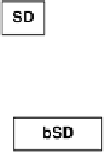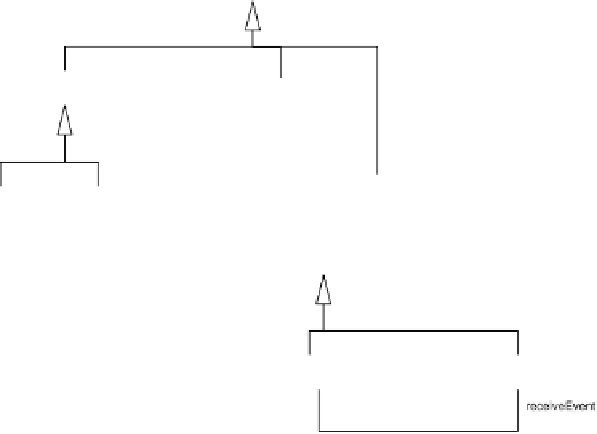Information Technology Reference
In-Depth Information
Fig. 3.
Metamodel of SD
To calculate the new partial ordering
≤
1
•
2
, sequential composition consists in
ordering events
M
2
if they are situated on the
same lifeline, and then compute the transitive closure of this ordering. In this
definition,
e
1
in bMSC
M
1
and
e
2
in bMSC
is the disjoint union of two multisets, i.e., an usual union operation
where common elements of both sets are duplicated. This operator is necessary
because even if the two operands have two identical events (events with the same
name), the two events have to present in the result. Indeed, for instance imagine
we want to make the sequential composition
B • B
,where
B
is a bSD which
contains only one message
. In this case, it is obvious that the two operands
contain the same events, but in the result we want that all the events appear.
Thus, in the sequential composition we have to copy and rename the identical
events and it is made with the disjoint union.
The cSD
A
log in
can be considered as a generator of a set of behaviors. For in-
stance, the cSD
log in
generates the set of behaviors
{P ropose•Accept, P ropose•
Retry • Accept, P ropose • Retry • Rejected}
. This set of behaviors can be po-
tentially infinite (as soon as a combined SD contains the operator loop, the set
of bSDs generated is infinite), but in this paper we will only consider finite SDs.
Figure 3 depicts the sequence diagram metamodel used to implement the
weaving process presented in this paper (the implementation is described in Sect.
6). We present this metamodel in this section to show that it fits very well with







































Search WWH ::

Custom Search